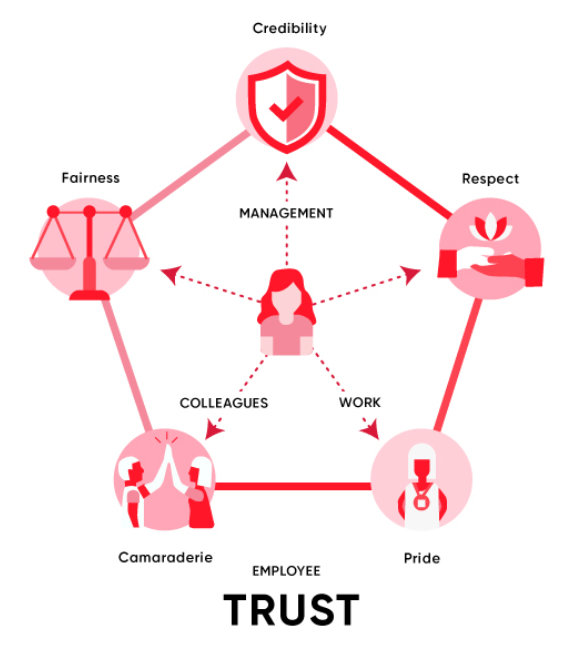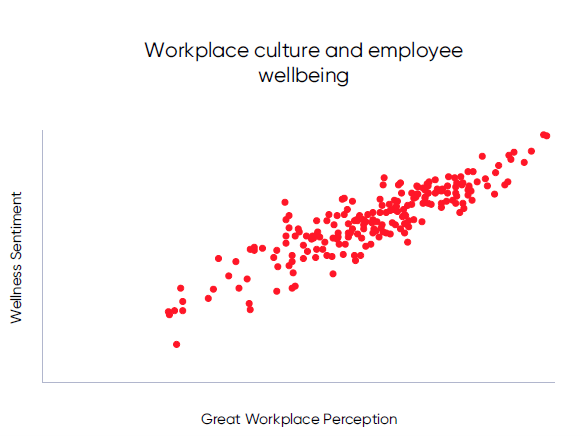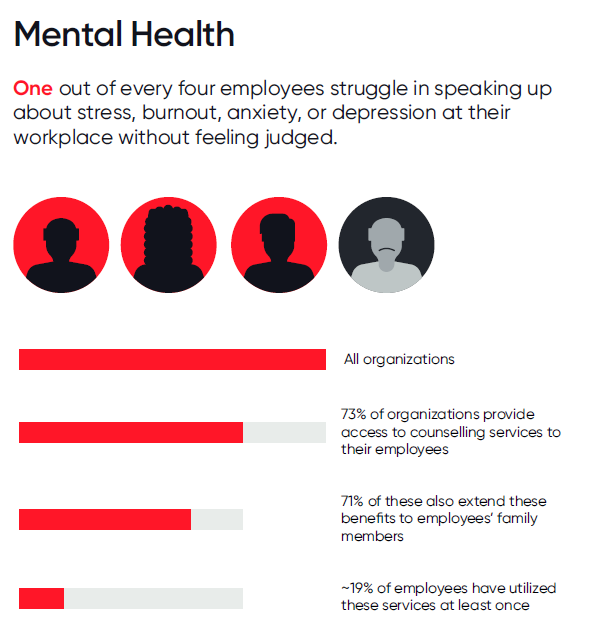Reading Time: 7 minutes
The whirlwind of today’s corporate world demands a sharp focus on employee wellbeing. It’s more than a fleeting trend; it’s the foundation for building a thriving, productive workplace. When employees feel supported, valued, and healthy – mentally and physically – the benefits extend far beyond individual happiness, impacting the organization’s success. Yet, many workplaces struggle to cultivate a culture that prioritizes the wellbeing of the employees. If you often find yourself feeling drained or unmotivated by the end of the workweek, you’re not alone. Modern work environments can be major contributors to stress, anxiety, and even physical ailments. This article delves into the top seven workplace factors that significantly impact the wellbeing of an employee, offering actionable insights to create a healthier and more supportive work ecosystem.
What is Employee Wellbeing?
When considering employee wellbeing, physical health often takes center stage. However, a complete understanding encompasses an individual’s entire work experience, including mental, physical, financial, emotional and social well-being. It reflects how well employees cope with job demands and life in general, both within and outside the workplace.

The importance of the same cannot be overstated. Promoting physical health is just one aspect of a well-rounded strategy; another is creating a supportive work environment for mental and emotional well-being. This overall approach is crucial for creating a workplace where employees can thrive, be productive, and feel genuinely satisfied with their work lives.
Unfortunately, many employees today face unhealthy work environments that significantly impact their wellbeing. The repercussions are vast, leading to increased stress, anxiety, depression, and physical health issues. For organizations, the consequences translate to reduced innovation, impact on the brand image, increased absenteeism, and lower productivity.
The Alarming State of Wellbeing in Modern Workplaces
The current state of employee wellbeing across the globe is concerning. A report by the World Economic Forum and Deloitte titled Advancing Workforce Wellbeing, reveals alarming trends. Approximately half of respondents reported feeling exhausted or stressed “always” or “often.” Other notable findings include feelings of overwhelm, irritability, loneliness, depression, and anger.
These insights highlight a troubling trend in the modern workplace. Despite a strong desire among employees to improve their wellbeing, many struggle to make meaningful progress. The pressures of work, coupled with inadequate support systems, are taking an increasing toll on both the mental and physical health of employees.

This situation is not only detrimental to individual employees but also poses a significant risk to organizations. Employees who are burnt out, stressed, and unhappy are less likely to be engaged, productive, or loyal to their employer. This emphasizes the urgent need for organizations to take proactive steps to prioritize their workplace wellbeing policies.
Why Is Fostering Employee Wellbeing Crucial for Success?
Promoting the wellbeing of employees is not just about creating a more pleasant work environment—it is a strategic imperative for business success. When employees are healthy and happy, they are more engaged and productive. Hence, the probability of them staying with the company for the long term is high. Moreover, a strong focus on employee health and wellbeing can lead to a positive organizational culture, higher levels of innovation, and better overall business performance.
A very critical component of employee engagement and organizational performance is fostering good health and wellbeing. Employees are more likely to be inspired, dedicated, and give their best work when they feel valued and supported. This is where tools like the Trust Index™ Survey by Great Place To Work®come into play. The survey is designed to assess employees’ experiences in various areas, including Pride, Fairness, Credibility, Respect, and Camaraderie.

Organizations that achieve Great Place To Work Certification™ and are recognized as Best Workplaces™ demonstrate that it is possible to create a thriving business environment where employees feel strong, healthy, and connected. These companies set a benchmark for others to follow, showing that a focus on employee experience is not just the right thing to do but also a smart business strategy.
7 Key Workplace Factors that Impact Employee Wellbeing
To build a workplace that enhances the experience and wellbeing of employees, organizations need to focus on several key factors. Here are the top seven workplace factors that significantly impact it:
1. Job Design with Control Over Work:
The design of a job, including the degree of control an employee has over their work, plays a critical role. When employees have autonomy and control over how they complete their tasks, they are more likely to feel empowered, engaged, and satisfied with their work. This sense of control can also reduce stress levels and improve overall job satisfaction. On the other hand, jobs that are poorly designed or lack autonomy can lead to frustration, stress, and burnout.
2. Managing Workload and Hours:
Excessive overtime and long working hours are major contributors to employee burnout and poor health. When employees regularly put in extended hours without getting enough rest, their physical and mental health can suffer. This may result in numerous negative outcomes, like higher amount of stress, fatigue, and chronic health conditions. Organizations must encourage a healthy work-life balance by setting reasonable expectations for work hours and discouraging excessive overtime.
3. Providing Social Support:
Social support in the workplace is an essential part of the overall employee experience. When employees feel that they have a supportive network of colleagues and managers, they are better equipped to cope with stress and challenges. Social support can also foster a sense of belonging and community, which is crucial for mental and emotional health. By promoting teamwork, offering social interaction opportunities, and cultivating a collaborative and respectful culture, organizations can facilitate social support.

4. Balancing Work and Family Life:
Balancing work and family commitments is a common challenge for many employees. Workplace wellbeing can be adversely affected by the stress that arises from the conflict between work and family obligations. By providing flexible work arrangements like paid parental leave, flexible hours, and remote work choices, organizations may better support employees. By accommodating employees’ family commitments, organizations can help reduce stress and improve overall wellbeing.
5. Perceived Fairness and Justice:
Employees’ perceptions of fairness and justice in the workplace have a profound impact on their wellbeing. When employees feel that they are treated fairly and that workplace decisions are made transparently, they are more likely to have higher levels of trust, engagement, and wellbeing. Perceived fairness also contributes to a positive work environment where employees feel valued and respected. Organizations can foster fairness by implementing open policies, equitable opportunities for promotion, and resolving bias and discrimination-related issues.
6. Job Security and Economic Stability:
Job security and economic stability are critical factors in the wellbeing of the employees. The threat of layoffs or economic instability can cause significant stress and anxiety, affecting both mental and physical health. Employees who feel insecure about their jobs may also be less engaged and productive. Organizations can support the health and wellbeing of their employees by providing clear communication about job stability, offering financial wellness programs, and creating a culture of trust and transparency during times of economic uncertainty.
7. Comprehensive Health and Wellness Support:

Access to comprehensive health insurance is a vital component of employee health and wellbeing policies. When employees know that they are covered in case of illness or injury, they experience less stress and are more likely to feel valued by their employer. Providing health insurance that covers a wide range of medical needs, including mental health services, can greatly enhance employee morale and faith in the organization. Organizations should also consider offering additional wellness programs, such as fitness incentives, mental health days, and access to counseling services, to further support employee health.
Benchmarking Your Company Culture
To truly understand how well your organization is supporting your employee’s overall wellbeing, it’s essential to benchmark your company culture. By conducting employee engagement surveys, you can get important insights into the aspects of working at your firm that your workers appreciate the most and the areas that still require development. These surveys can help you identify the key factors that impact employee experience in your organization and provide a roadmap for creating a healthier and more supportive work environment.
By gathering and analyzing data from this survey, organizations can make informed decisions about how to enhance employee engagement, boost retention rates, and increase productivity and performance. This data-driven approach ensures that the initiatives you implement are aligned with the needs and preferences of your employees, leading to more effective outcomes.
Get Certified to Showcase Your Commitment
Achieving Great Place To Work Certification is an excellent way to demonstrate your organization’s commitment to the overall wellbeing and experience of employees. This Certification not only enhances your employer branding but also helps attract and retain top talent. It highlights to current and prospective employees that your organization values their health, happiness, and overall wellbeing.
By ensuring to implement a culture of trust, respect, and collaboration, you can create a workplace where employees feel strong, healthy, and connected. Certification also provides a benchmark for continuous improvement, helping you to identify areas where you can further enhance employee wellbeing and overall workplace culture.









